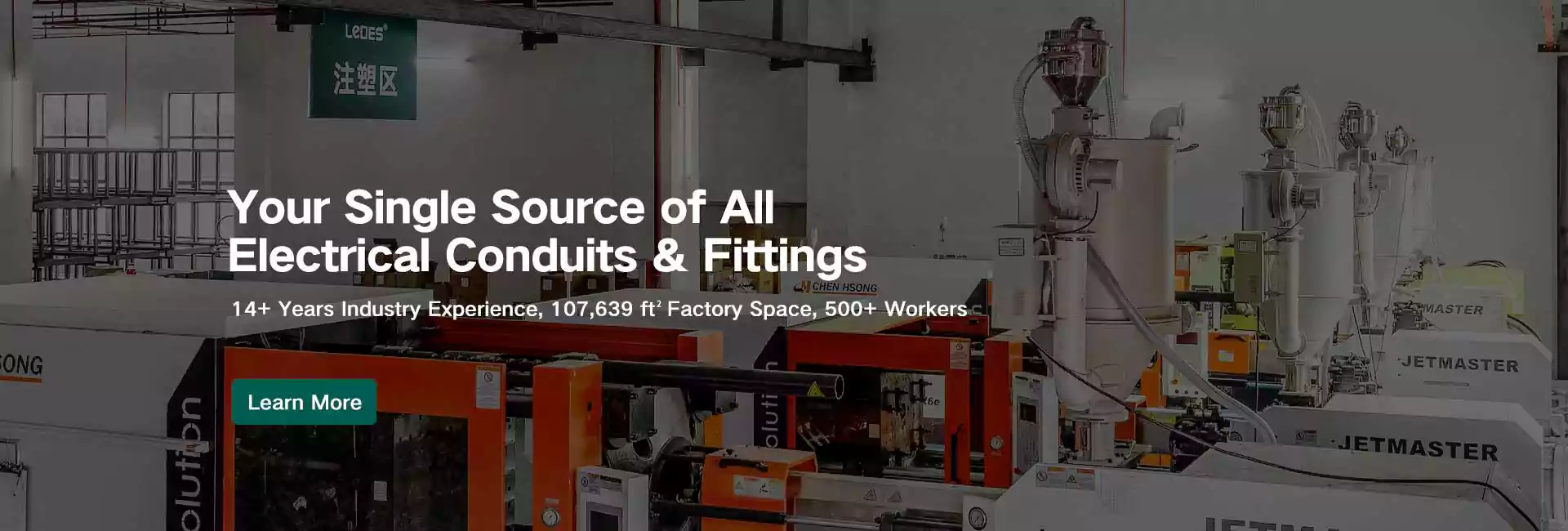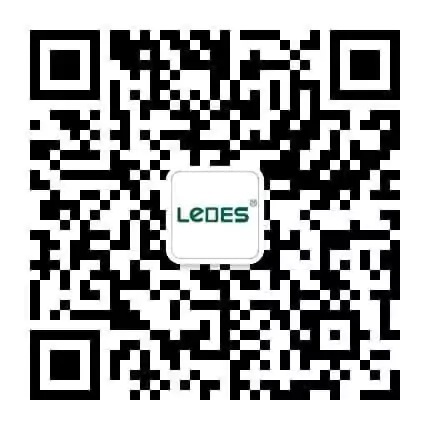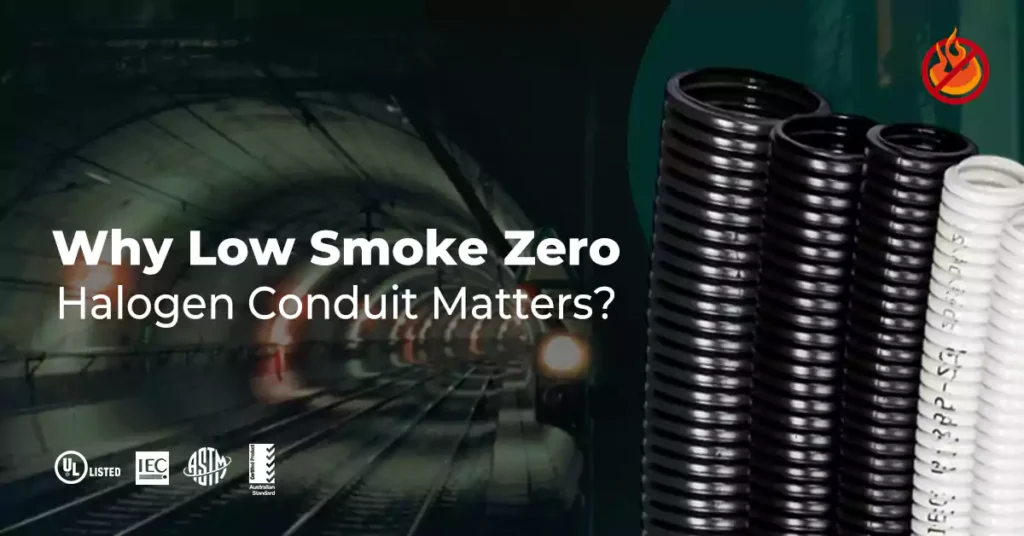
Table of Contents
In today’s rapidly evolving world, safety and sustainability are no longer optional—they are essential. As our buildings, transportation systems, and data infrastructure become more advanced and interconnected, the materials we use to support them must also rise to meet modern demands. Electrical conduit systems, once chosen solely for mechanical strength or installation convenience, are now evaluated through the lens of fire safety, toxic emissions, and environmental impact.
This shift in priorities has brought Low Smoke Zero Halogen (LSZH) conduit into the spotlight. Engineered to minimize harm during fires and reduce the release of toxic gases, LSZH conduit reflects a broader move toward smarter, safer, and more responsible design choices. As safety codes tighten and green building practices gain momentum, understanding the role of LSZH conduit is more important than ever—for engineers, architects, and facility managers alike.
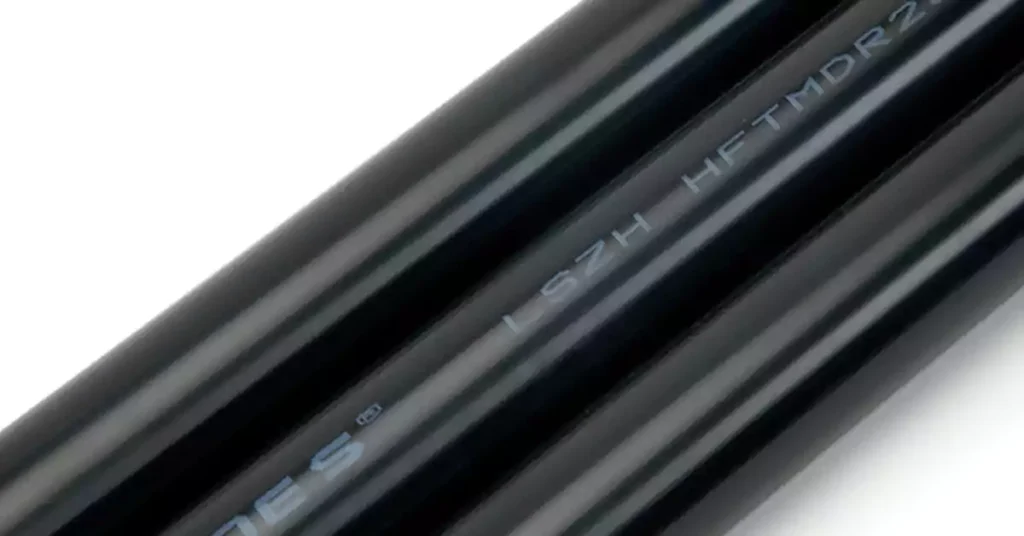
Low Smoke Zero Halogen conduit refers to a type of electrical conduit made from specially engineered materials that do not emit halogenated gases and produce significantly less smoke when exposed to fire. Unlike traditional materials like PVC, which can release thick, toxic, and corrosive fumes during combustion, LSZH conduits are designed with both safety and environmental protection in mind.
The concept of LSZH materials originated in the cable industry and was first developed in 1979 by Richard Skipper at Raychem Corporation. These materials are typically made from thermoplastic or thermoset compounds filled with non-halogenated flame retardants—most notably aluminum trihydrate (ALTH). When exposed to high heat, ALTH undergoes a chemical reaction that releases steam, absorbs heat, and helps create a protective char layer, reducing both flame spread and the release of harmful gases.
LSZH conduits are valued for their ability to release low-density, non-toxic smoke during a fire, making it easier for people to evacuate and safer for firefighters to operate. Since they don’t release corrosive halogens like chlorine or fluorine, they also help protect electronic equipment from damage.
LSZH conduit is defined by its ability to:
- Minimize smoke emission during fire
- Eliminate halogen gas release
- Reduce health and environmental hazards
- Protect critical systems from corrosive damage
- Support compliance with stricter modern safety codes
With growing emphasis on occupant safety, system resilience, and sustainable design, LSZH conduit is increasingly becoming a preferred choice for applications where fire risk, air quality, and environmental impact are top concerns.
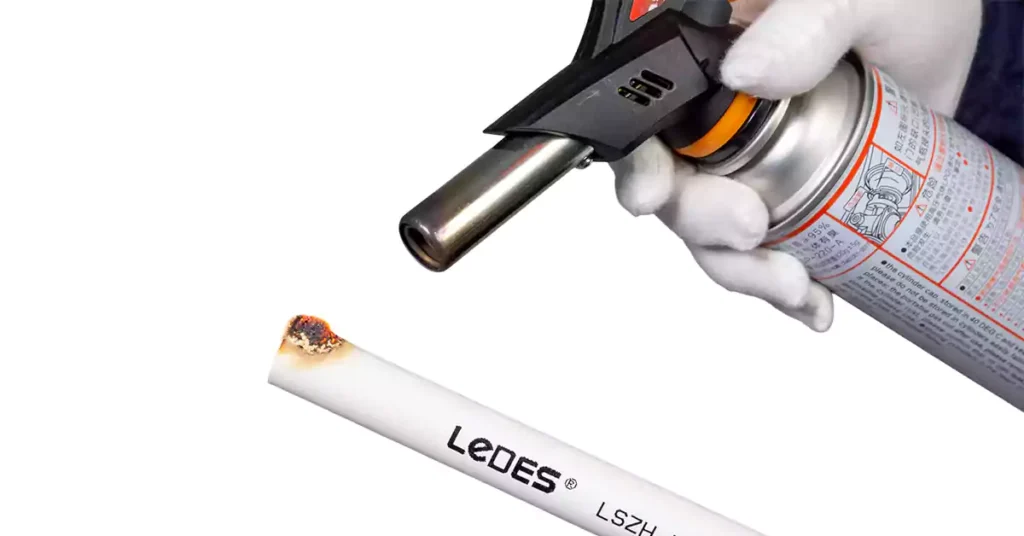
Low Smoke Zero Halogen (LSZH) conduit offers a comprehensive range of advantages that go beyond traditional expectations for electrical protection.
Due to its specialized material formulation, LSZH conduit is significantly lighter than traditional PVC conduit. For conduits of equivalent wall thickness, LSZH versions are typically over 30% lighter—a major advantage in large-scale installations, where ease of handling can reduce labor intensity and speed up project timelines. Despite being lighter, LSZH conduits maintain excellent mechanical strength (15%-20% higher strength than PVC conduit), offering enhanced mechanical protection and long-term durability without added bulk.
In the event of a fire, visibility and air quality can mean the difference between life and death. LSZH conduit is engineered to emit low optical density smoke at a reduced rate, providing more breathable air and clearer escape paths for occupants. This property is tested and validated by recognized standards such as ASTM E662, which measures smoke density under flaming and non-flaming conditions. Low smoke production also supports safer conditions for first responders and reduces the likelihood of secondary fire spread through smoke particulates.
Unlike conventional conduit materials that may release corrosive or toxic halogenated gases (such as hydrogen chloride), LSZH conduit contains no halogens. This makes it a superior choice for installations where human health, sensitive electronics, or ventilation systems are a concern. Compliance with IEC 60754 standards ensures that LSZH materials release minimal toxic and corrosive gases, preserving indoor air quality and reducing long-term damage to nearby systems in the event of a fire.
LSZH conduit is formulated to meet stringent flame-retardant standards such as IEC 61386, UL1685, UL94, ensuring it resists ignition and limits fire propagation. Its formulation typically includes mineral-based fire-retardant additives like aluminum trihydrate, which release water vapor when exposed to high temperatures, absorbing heat and forming a protective char barrier. This not only slows the spread of fire but also helps preserve structural integrity during emergencies.
While LSZH conduit may cost 10–15% more upfront than standard PVC alternatives, its long-term economic advantages are significant:
- 20–30% lower insurance premiums, according to Lloyd’s of London (2022), due to reduced fire risk.
- Lower maintenance and replacement costs, thanks to its high resistance to fire damage and longer operational lifespan.
- Reduced liability and litigation risk in human-occupied environments such as hospitals, tunnels, and data centers.
- Minimized downtime in critical applications where service continuity is vital.
Protecting human life is the foremost reason behind the development of LSZH technologies. In fire emergencies, occupants are far more likely to escape safely when smoke is minimized and no poisonous gases are released. LSZH conduit plays a direct role in improving building egress strategies, indoor air survivability, and the working conditions of emergency personnel.
As sustainability becomes a key driver in the construction and electrical sectors, LSZH conduit supports greener project goals. Its halogen-free nature ensures minimal release of toxic byproducts into the environment, both during use and in the case of a fire. Many LSZH formulations are also recyclable and manufactured under strict environmental controls, aligning with LEED and other green building certification systems.
The performance and safety of LSZH conduit are backed by a range of well-established international and regional standards. These standards evaluate critical characteristics such as flame resistance, smoke density, toxicity, and structural performance—ensuring LSZH conduit meets the demanding requirements of modern infrastructure and high-risk environments.
Some of the most relevant and widely adopted standards include:
IEC 61386 – Specifies mechanical and electrical performance for conduit systems.
IEC 60754 – Covers halogen gas emissions from cable materials during combustion.
IEC 61034 – Measures smoke density during cable burning.
ASTM E662 – Assesses smoke generation under controlled conditions.
UL 1685 / UL 94 – Evaluates vertical flame propagation and fire-resistance of electrical conduit systems.
NFPA 130 – Fire protection standards for fixed guideway transit and passenger rail systems
AS/NZS 2053 – Conduit systems for Australia and New Zealand regions.
These standards collectively ensure that LSZH conduit not only minimizes toxic gas and smoke production but also provides long-term structural reliability under extreme conditions.
For a deeper dive into these LSZH standards and how they apply to conduit systems, check out our last post about the code compliance of Halogen Free conduit.
When selecting conduit materials for electrical installations, understanding the differences between Low Smoke Zero Halogen (LSZH) and Polyvinyl Chloride (PVC) conduits is crucial. Below is a comparative analysis highlighting key performance metrics:
Metric | LSZH Conduit | PVC Conduit |
Smoke Density | Low (typically ≤ 60 Ds) | High (up to 600 Ds) |
Halogen Content | Halogen-free | Contain halogens |
Toxic Gas Emission | Minimal toxic gas emission | Release toxic gases upon combustion |
Flame Retardancy | Excellent ( e.g., UL94 V-0, 5VA) | Meet basic standard requirement |
Weight | Approximately 30% lighter | Heavier |
Mechanical Strength | High | High, especially Schedule 80 |
Extreme Temperatures | Outstanding in higher and colder environments | Become brittle in cold, and soften in high temperatures, not as good as LSZH conduit |
Cost | Higher initial cost, but benefits in long-term cost | More cost-effective |

Proper installation of Low Smoke Zero Halogen (LSZH) conduit is crucial to ensuring its performance, safety, and long-term reliability. While LSZH systems share many similarities with traditional PVC conduit, their unique properties demand specialized handling and techniques. Below are comprehensive best practices recognized by industry professionals and standards bodies.
Because LSZH conduit behaves differently from standard PVC or metal conduit, installation personnel should receive dedicated training on:
- Proper bending and cutting techniques
- Joint assembly using LSZH-compatible fittings or solvent-free adhesives
- Handling temperature-sensitive materials in different environments
Certified training ensures that the installation complies with fire safety and material integrity requirements and minimizes the risk of post-installation failure.
- Adhesive Compatibility: Only use halogen-free solvent or mechanical fittings approved by the conduit manufacturer. Standard PVC solvent cement may compromise the LSZH compound’s fire-retardant and halogen-free properties.
- Fittings and Accessories: Use LSZH-certified couplers, bends, adapters, and junction boxes to ensure consistent fire performance throughout the system.
Regular quality checks and inspections during installation ensure that the LSZH conduit retains its properties. Documenting installation procedures and performance metrics builds a strong case for compliance with strict safety regulations and reinforces your company’s commitment to quality.
When retrofitting or upgrading existing electrical systems:
- Confirm that LSZH conduit is compatible with any legacy conduit materials (e.g., PVC, metal) in terms of size, wall thickness, fittings, and expansion behavior
- Maintain appropriate separation between halogen-free and halogenated conduit runs to avoid contamination in fire-sensitive environments
- Ensure clear labeling and up-to-date schematics for future maintenance personnel
- Temperature: LSZH conduit can withstand extreme temperatures itself, Ledes LSZH conduit performs well from -45°C to +150°C, but for extreme cold may cause brittleness.
- UV Exposure: Use UV – stabilized LSZH conduit in outdoor or sunlit environments to prevent premature degradation.
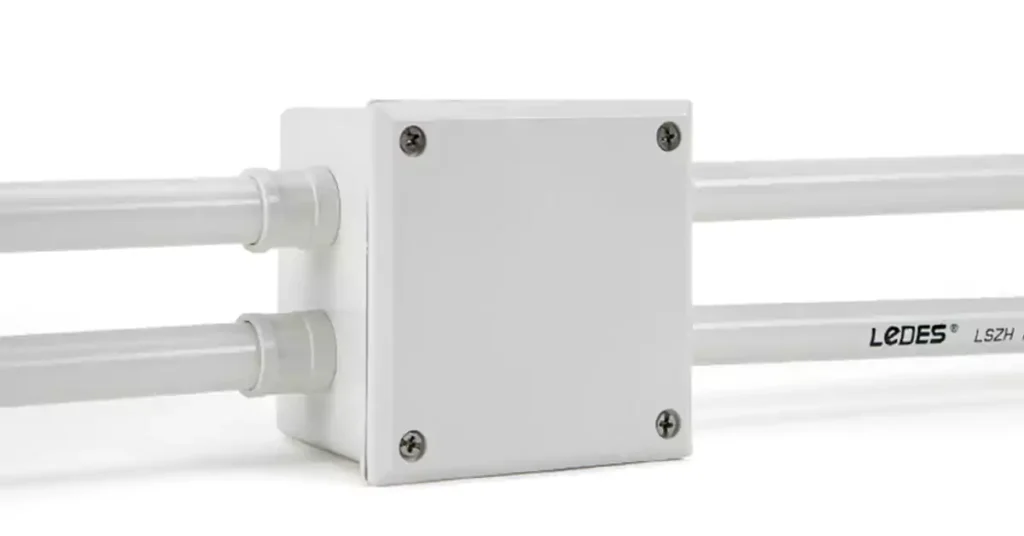
Low Smoke Zero Halogen (LSZH) conduit is becoming the preferred choice for electrical installations in environments where fire safety, human health, and equipment protection are non-negotiable. LSZH conduit’s characteristics and features make it ideal for enclosed, high-traffic, or sensitive locations.
Here are some scenarios where LSZH conduit plays a vital role:
Schools house large numbers of children and staff in relatively dense spaces, often with limited exit routes.
Reduced smoke ensures better visibility and safer evacuation
Zero halogen content avoids toxic gas inhalation, especially critical for children
Medical facilities often contain oxygen-rich environments, high-density cabling, and vulnerable patients who cannot evacuate quickly.
Non-toxic emissions protect patients, healthcare workers, and equipment
Fire resistance can better prevent the fire spread.
Underground and enclosed transport infrastructure has high occupancy rates and limited ventilation.
Low smoke release can prevent smoke accumulation, and protect people from toxic fume inhalation.
Passenger terminals and air traffic control systems require uninterrupted operation and safe evacuation routes.
LSZH conduit provides enhanced fire control performance.
EV charging stations, especially DC fast chargers, carry high-voltage currents and are often installed in commercial garages, basements, and enclosed spaces.
LSZH conduit can better reduce fire risk from cable faults and supports sustainability goals and smart infrastructure integration.
Solar farms and rooftop PV systems operate under UV exposure, elevated temperatures, and long-term DC loads.
LSZH conduits offer UV resistance, long service life, and environmental safety for both residential and utility-scale solar.
Heavy industrial environments and critical utilities face elevated fire, chemical, and electrical hazards.
LSZH provides a safe, corrosion-resistant solution that protects both people and mission-critical operations.
These facilities demand 24/7 uptime and protection of high-value digital infrastructure, have very strict fire safety requirement.
Non-corrosive and low-smoke conduit reduces damage to servers, control panels, and networking gear during a fire.
Selecting the right LSZH conduit supplier is critical for ensuring your project meets all performance, safety, and compliance expectations. Here’s what you should consider:
A trustworthy supplier must provide LSZH conduits that comply with major standards like NFPA 130, UL1685 (FT4/IEEE1202 flame tests), and other relevant local and industry-specific regulations. Certifications and third-party test reports should be readily available to verify product quality.
Suppliers with a proven track record in critical infrastructure projects—such as subways, tunnels, railways, airports, and hospitals—are more reliable.
For example, Ledes’ LSZH conduit has been successfully used in projects like the Melbourne Metro Tunnel, a project with extremely high fire safety and environmental requirements.
Good LSZH conduit suppliers invest in strict raw material control and rigorous mechanical and fire performance testing, including:
High and low temperature resistance
UV resistance (for exposed applications)
Compression and impact strength
A good supplier should offer not only rigid LSZH conduits but also corrugated versions, plus all matching fittings. A complete system ensures easier installation, better performance, and compliance across the whole project.
Every project has unique needs. A strong supplier should be able to offer:
Custom sizes or colors
Special formulations (e.g., enhanced UV stability)
Engineering support for product selection and installation advice
While safety and compliance are critical, cost matters too — especially for large-scale projects.
A good supplier offers a competitive price without sacrificing essential performance requirements. LSZH conduit is typically more expensive than standard PVC conduit, but pricing among LSZH options can still vary significantly depending on material formulation and manufacturing quality.
Large infrastructure projects often have tight deadlines. Choose suppliers who:
Maintain strong inventory levels
Offer reasonable lead times
Provide good after-sales support, including warranty and problem resolution services
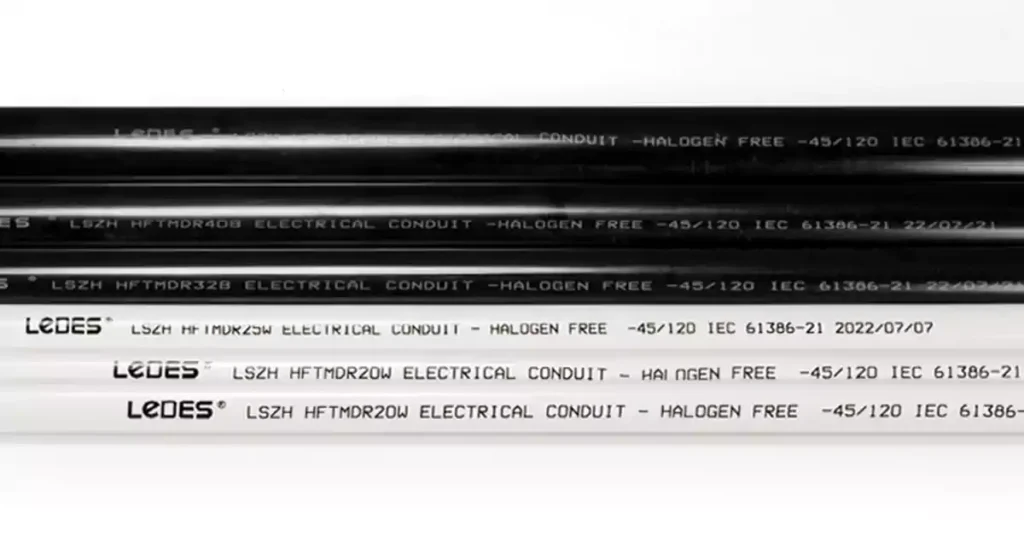
At Ledes, we are driven by a simple but powerful mission: to create safer, smarter, and more sustainable electrical infrastructure for the world. As a trusted global manufacturer specializing in Low Smoke Zero Halogen (LSZH) conduits and fittings, we have built our reputation on delivering high-performance solutions that meet the most rigorous international safety and environmental standards.
With decades of experience in the electrical conduit industry, Ledes has developed a comprehensive portfolio of LSZH rigid and corrugated conduit systems designed to serve a wide range of demanding applications. Our LSZH products are engineered not only for low flame propagation, minimal smoke release, and zero halogen content, but also for long-term mechanical durability, flexibility, and ease of installation.
Ledes offers a full line of LSZH conduit solutions, including:
- Rigid LSZH Conduit – Heavy-duty and medium-duty rigid LSZH conduit for structured commercial and industrial systems
- Flexible LSZH Corrugated Conduit – Heavy-duty and medium-duty corrugated conduit for dynamic installations or tight-space routing
- Low Smoke Halogen-Free Fittings – such as elbows, couplings, adaptors, tees, boxes, and mounting hardware—all designed for compatibility and system integrity
- Expert Formulation: Our R&D team is constantly innovating to refine material performance. Every LSZH compound we use is carefully tested and benchmarked against leading safety standards like UL 94, IEC 61034, and IEC 60754-1/2, ensuring superior flame resistance and ultra-low smoke and toxicity.
- Certified Safety and Compliance: Ledes LSZH conduits and accessories carry IEC, CE and ASTM certifications and test reports, offering global customers the assurance of top-tier quality control and international code compliance.
- Customer-Centric Solutions: From initial consultation to product delivery, we offer tailored conduit solutions that fit each client’s exact specifications. Our knowledgeable team supports every stage of the project with technical guidance, product customization, and fast, responsive service.
- Sustainable Manufacturing: Environmental responsibility is at the heart of our operations. Our LSZH products are fully environmental friendly and produced with minimized carbon footprint—meeting the growing demand for green construction practices.
With reliable quality and excellent performance, Ledes LSZH products are widely used in some global projects.
Melbourne Tunnel Project – Australia
This multi-billion-dollar rail project aims to ease congestion and expand the capacity of Melbourne’s public transport network. In the underground sections of the project, fire safety and smoke suppression were critical priorities due to the confined environment and high passenger volume. Ledes supplied rigid and corrugated LSZH conduits that met the AS/NZS 2053, UL94, IEC and ASTM standards offering low flammability, halogen-free materials, and exceptional performance under high-stress conditions. Our solutions played a key role in ensuring long-term safety and regulatory compliance throughout the tunnel system.
Macau Island Hospital Project – China
As one of Macau’s largest and most modern healthcare developments, the Macau Island Hospital demanded the highest standards for electrical system safety. Our LSZH conduit systems were selected to protect emergency circuits, sensitive medical equipment wiring, and backup power systems. Thanks to their low toxicity, minimal smoke emission, and high chemical resistance, Ledes LSZH products helped the facility meet strict healthcare safety codes while supporting its long-term operational resilience.
At Ledes, we don’t just manufacture conduit—we engineer confidence, safety, and peace of mind into every installation. From local builds to international projects, our LSZH solutions are trusted where it matters most.
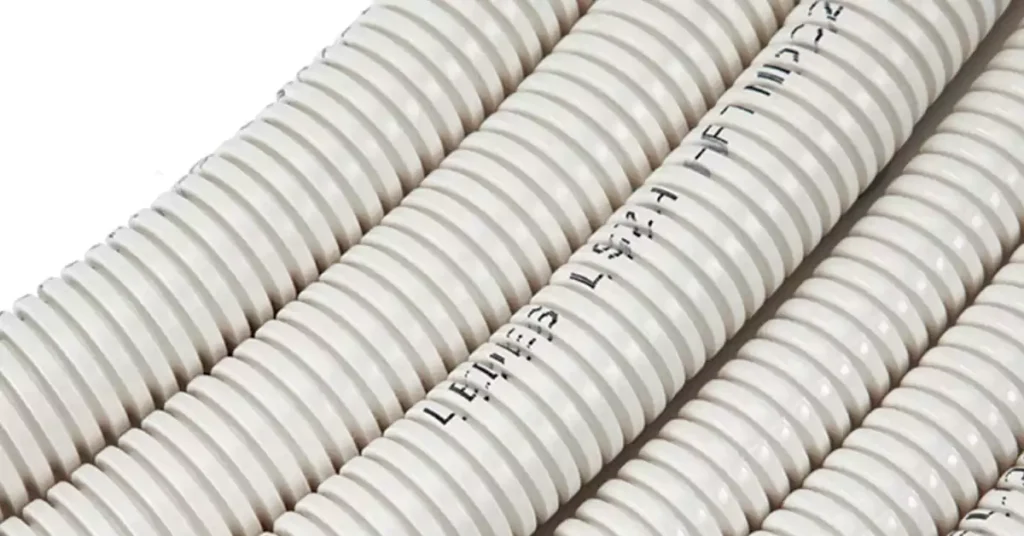
As the global demand for safer, smarter, and greener infrastructure accelerates, the future of Low Smoke Zero Halogen (LSZH) technology lies in innovation, and at Ledes, innovation is at the core of everything we do.
Our Research & Development division is continuously advancing the science of LSZH materials. Building on decades of formulation expertise, Ledes is now developing its fourth-generation LSZH compounds, which is a major leap forward in both safety and performance.
This new generation will deliver improved thermal stability, reduced environmental impact, and greater mechanical strength, while maintaining the hallmark low smoke, zero halogen characteristics. Ensure each advancement meets or exceeds the safety and performance standards.
A next-gen flexible LSZH conduit system is expected to offer up to 50% more bendability than traditional products. Designed specifically for retrofits, tight-space installations, and dynamic environments, FlexGuard LSZH provides superior routing ease without compromising fire safety or halogen-free performance.
In smart infrastructure integration, developing LSZH conduits with embedded temperature and load sensors will be widely utilized in the future. These intelligent conduits sync with Building Management Systems (BMS) to detect overheating, cable overloading, or environmental threats in real-time, enabling predictive maintenance and early failure prevention in mission-critical facilities.
These innovations are not just technological upgrades, they reflect a deeper shift toward resilient, responsive, and future-proof electrical systems.
The market for LSZH compounds is rapidly expanding as regulations tighten and public awareness of fire and toxicity risks grows. According to recent industry forecasts, the Low-Smoke Zero-Halogen (LSZH) Compounds Market is projected to grow from USD 1.5 billion in 2024 to USD 2.8 billion by 2033, at a CAGR of 7.5% from 2026 to 2033.
This surge is being driven by key sectors such as:
Mass transit systems and tunnels
Data centers and telecommunications
Renewable energy and electric vehicles
Healthcare and public buildings
Smart city and infrastructure modernization initiatives
With regulatory bodies worldwide adopting stricter fire, smoke, and environmental standards, the role of LSZH conduit solutions will only become more central to the future of construction and electrical safety.
As the demand for safer, more sustainable, and higher-performing electrical infrastructure grows, Low Smoke Zero Halogen (LSZH) conduit has become a critical component in modern construction. Its ability to minimize toxic emissions, support fire safety, and meet rigorous global standards positions it as a forward-looking solution across a wide range of applications. At Ledes, we are proud to be at the forefront of this transformation, delivering advanced LSZH conduit systems backed by proven performance, industry certifications, and ongoing innovation. From landmark infrastructure projects to everyday safety upgrades, we remain committed to building a safer, smarter future—one conduit at a time.
What is LSZH conduit and how does it differ from traditional PVC conduit?
LSZH (Low Smoke Zero Halogen) conduit is a type of electrical conduit engineered to emit minimal smoke and zero halogenated gases when exposed to fire or high temperatures. Unlike conventional PVC (polyvinyl chloride) conduit, which can release toxic and corrosive gases such as hydrogen chloride, LSZH conduit significantly reduces the risk of respiratory damage, equipment corrosion, and impaired visibility during fire events.
Can LSZH conduit be used outdoors or in industrial environments?
Yes. Modern LSZH conduits, including Ledes’ heavy-duty and UV-stabilized lines, are suitable for outdoor, industrial, and even corrosive environments. They offer:
- Excellent UV and weather resistance
- High impact strength and compression resistance
- Operating temperature ranges from -45°C to +150°C, depending on formulation
- Resistance to oils, chemicals, and mechanical abrasion
These properties make LSZH conduit a robust and versatile solution even beyond controlled indoor environments.
In what applications is LSZH conduit commonly used?
LSZH conduit is especially suited for installations where human health and critical infrastructure protection are paramount. Common applications include:
Public infrastructure: subway systems, tunnels, airports, and rail stations
Healthcare: hospitals, clinics, and biomedical facilities
Education: schools, universities, and libraries
Data centers and telecom: where corrosion or smoke could damage sensitive equipment
EV and solar energy systems: especially where sustainable, low-emission materials are required
Marine and offshore installations: due to the need for non-corrosive, flame-resistant materials in confined or salt-exposed spaces
Which international standards does LSZH conduit meet?
High-quality LSZH conduits are developed to comply with a wide range of international standards that ensure fire resistance, low toxicity, and environmental responsibility. Ledes LSZH conduit and fittings are designed to meet required standards, including:
IEC 61386 – Performance standard for conduit systems
IEC 60754-1/2 – Measurement of halogen acid gas and acidity
IEC 61034 – Measurement of smoke density
UL 94 – Flammability rating of plastic materials
UL 1685 and ASTM E662 – Flame and smoke propagation testing
NFPA 130 – Fixed guideway transit and passenger rail systems safety standard
What are the key technical properties of LSZH conduit?
Despite their fire resistance and no halogen and toxic fume emissions, LSZH conduits often feature a wide operating temperature range (commonly from –45°C up to +150°C), and robust mechanical strength which is compression and impact resistant. These properties make them well suited for both indoor and challenging outdoor applications.
How do I decide whether to use LSZH or PVC conduit?
Choosing between Low Smoke Zero Halogen (LSZH) and traditional PVC conduit depends on the specific requirements of your project, particularly in relation to fire safety, environmental risk, and regulatory compliance.
Use LSZH conduit when:
- The installation is in enclosed or high-occupancy spaces like subways, hospitals, airports, tunnels, schools, or data centers, where smoke and toxic gas emissions during a fire pose a serious risk.
- The project is governed by strict fire safety standards or building codes, such as NFPA 130, IEC 61034, IEC 60754, or UL 1685, which often mandate the use of halogen-free materials.
- You are working on critical infrastructure or mission-critical applications (e.g., telecoms, energy, or emergency systems) where fire-related downtime must be minimized.
- There is a requirement for environmentally sustainable materials, as LSZH compounds do not release corrosive halogens and are often recyclable.
Use PVC conduit when:
- The environment is low-risk, such as in open areas, residential buildings, commercial structures with proper ventilation, or outdoor spaces.
- Budget constraints are a primary concern, and the application does not involve sensitive electronics, densely populated areas, or strict fire codes.
- The system does not require halogen-free components, and standard code compliance (e.g., NEC for general electrical installations) is sufficient.
In many modern installations, both types may be used strategically, LSZH in interior or critical areas and PVC for outdoor or underground runs, to balance cost and compliance.
When in doubt, consult the project’s fire safety engineer or check local regulations, as requirements can vary significantly depending on jurisdiction and industry.

